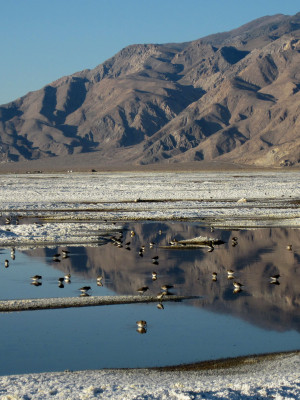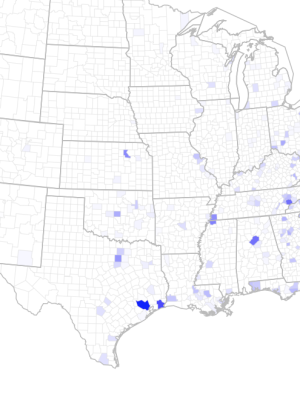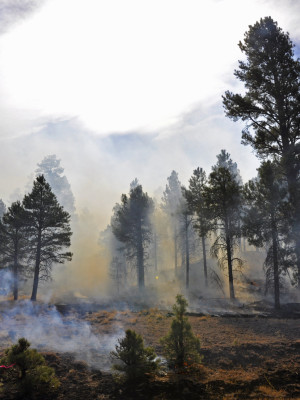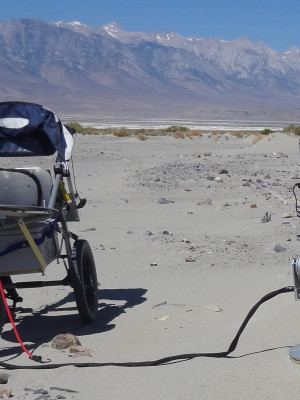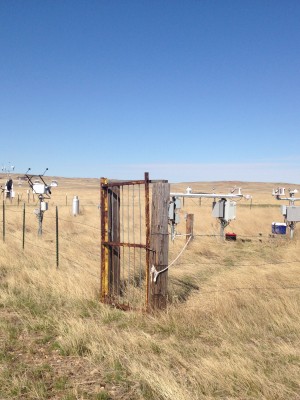METICULOUS TO THE LAST DETAIL
Complete In-house Environmental Consulting
Our air quality consulting services range from routine monitoring, modeling, permitting, and air pollution compliance projects to non-traditional projects with a focus on unique products that require special handling. We efficiently manage more traditional projects by applying time-tested methods and delivering high-quality products. Non-traditional projects will have one or more unique characteristics, such as new or unfamiliar technologies, emission sources that have attracted heightened attention, model-performance challenges, an accelerated permitting process, and/or air basins with unusual compliance issues. Our dedicated effort and creativity ensure that the solutions and products for all projects meet our high quality standards and meet or exceed client expectations.
PERMITTING
From state-level minor source permits to full-blown Federal Prevention of Significant Deterioration (PSD) New Source Review (NSR) applications, Air Sciences has been working hard for clients across the country to address their permitting needs.
Our experienced personnel help clients find solutions to their air quality problems as quickly and efficiently as possible.
Emissions Inventory. Air Sciences knows how to build a complete and accurate emissions inventory on a facility and regional basis.
BACT. Air Sciences knows the ins-and-outs of a Best Available Control Technology (BACT) analysis, including Greenhouse Gas BACT.
The Application Process. Air Sciences works closely with our clients to obtain “workable” air permits (e.g., PSD, Title V, Acid Rain, minor, and synthetic minor permits), which allow for maximum operational flexibility while ensuring compliance.
MONITORING
Air Sciences offers the stability and support of a firm with over 30 years of experience providing high-end meteorological monitoring services to the industry. The monitoring team is comprised of skilled instrumentation technicians, experienced aerometric data analysts, engineers, highly competent ex-military systems personnel, and experienced project managers who all bring unique qualifications and capabilities to projects.
Air Quality and Meteorological Monitoring. Air Sciences has worked with many types of air quality and meteorological instrumentation, expertly configured to meet the needs of your particular project.
Custom Applications. Air Sciences has the technical horsepower to design, build, and operate unique, one-of-a-kind monitoring systems in a cost-efficient fashion.
Data Management. With our advanced data management system, Air Sciences quickly and efficiently checks and verifies incoming data, and provides instant online access for clients.
KEY CERTIFICATIONS AND TRAINING
Safety. All monitoring personnel are currently certified for Mining Safety and Health Administration (MSHA) training, CPR and first aid, and our rigorous in-house fall protection program. All work is performed in compliance with Air Sciences’ Safety Program and with specific client safety requirements and policies.
RELATED PROJECTS
COMPLIANCE
Our compliance support services include auditing; resolving violations identified by an agency or audit; and streamlining compliance monitoring, recordkeeping, and reporting procedures to minimize the burden on day-to-day client operations. Notices of violations do not have to turn into heavy fines or shutdown orders. We routinely work with agencies and our clients to develop plans and schedules to address any violations in a manner that focuses on remedy, satisfies the agency, limits financial loss, and allows operations to continue.
Operational Compliance. The varied backgrounds of our engineers and scientists combine with the know-how of on-site personnel to develop compliance techniques that are streamlined and fit the operation. Our goal is to make compliance with permit conditions and regulatory requirements a compatible part of routine operations.
Audit Services. Air Sciences provides a variety of internal audit services, including rule applicability determinations; routine checks on day-to-day compliance; historical record review and compliance assessment; support to prepare self-certification reports; and participation in audit Tiger Teams.
Remedies and Compliance Plans. In the event of a notice of non-compliance or violation, Air Sciences provides quick-response guidance and support to confidentially address the situation. Curtailing the violation, identifying remedies, recommending safeguards to prevent future violations, drafting compliance plans and consent decrees, and supporting negotiations with enforcement officials are services we provide. In these difficult situations, we work with our clients to be thorough and proactive and to keep all parties focused on remedy (rather than fines and enforcement).
DISPERSION MODELING
Air Sciences has considerable experience and detailed knowledge of air quality dispersion modeling methods used to permit facilities.
Wide Range of Experience. Air Sciences has worked in all aspects of modeling processes associated with PSD and state-level permits, including: near-field analyses using AERMOD; long-range transport with CALPUFF for demonstrating compliance with PSD Class I increments, acid deposition, and visibility impacts; additional growth and Class II soils and vegetation analyses; and Air Quality Related Values (AQRVs) evaluations in Class I areas. Air Sciences understands the state and federal air permitting regulations and modeling guidance and the various policies and regulations that drive the modeling analyses.
No Job too Small. Air Sciences has worked on complex mining operations with large numbers of sources (including thermal processes), large modeling domains and receptor grids, and complex terrain configurations, which challenge many assumptions inherent in the model. In addition, we have worked with Plume Volume Molar Ratio Method (PVMRM) and Ozone Limiting Method (OLM) configurations of the model for nitrogen dioxide modeling. Our team has developed innovative methods to evaluate complex networks of mobile sources operating under changing meteorological conditions and has written “smart” post-processing routines to determine the impacts of these sources for comparison to the new, stringent, and statistically based ambient standards (e.g., 24-hour PM2.5, 1-hour NO2). Air Sciences’ modeling analyses are scientifically defensible and stand up to local, state, and federal agency review.
We Know the Science. Air Sciences’ scientists and engineers understand the underlying physics of dispersion models and are able to dive into FORTRAN code to diagnose problems. We have developed modeling applications to address clients’ unique modeling needs, including the Fire Effects Tradeoff Model (FETM) and the Smoke Impact Spreadsheet (SIS) model. Several staff members also have experience conducting model reviews, either directly as a third-party reviewer or as a contractor to a regulatory agency.
RELATED PROJECTS
DATA MANAGEMENT AND VISUALIZATION
Data management and visualization is a core service Air Sciences provides, whether to support a permitting project or as a primary product, to our clients. Our team has designed, developed, and tested a variety of unique data management and visualization applications ranging from database-driven GIS environments to powerful statistical programs integrated with interactive web-based tools. Our specialties include spatial database design and implementation, web application design and development, and real-time data handling across a range of platforms.
Data Management. Air Sciences has designed and implemented a variety of air quality databases. Whether for tracking real-time monitoring data or managing fire model data, we have the experience to organize and manage data for any air quality project.
Visualization. Air Sciences has the ability to produce a variety of data visualizations ranging from standard formats to custom client requests. Our team’s experience includes statistical analysis and graphing packages, GIS-based plotting, and modern interactive web technologies.
RELATED PROJECTS
FIRE-RELATED SERVICES
Wildland fire is a critical issue in the United States related to air quality, human health, and climate change. The team at Air Sciences has a wide breadth of experience researching many aspects of fire characterization, including landscape disturbance, fire ecology, fire behavior modeling, emissions characterization, and regional air quality impacts.
Emissions Inventories. Since 2002, Air Sciences has been on the forefront of emissions inventory development for wildland and agricultural fires with applications that include regional haze analysis, SIP planning, and exceptional events analysis.
Fire Behavior Modeling. Air Sciences has developed and applied ecosystem dynamics models that account for management activities and fire behavior and effects at the landscape level, in ecosystems as diverse as Alaska, California, Montana, Utah, New Mexico, Michigan, Alabama, and Florida.
Smoke Management. Air Sciences has developed dynamic, real-time decision support systems for air quality agencies around the United States to help manage smoke from prescribed and agricultural burning. We employ the latest in open-source web technologies, including mapping, alert notifications, and interactive data visualization.
RELATED PROJECTS
DUST MITIGATION AND ASSESSMENTS
Since 1998, Air Sciences has provided technical assistance to multi-million dollar projects to mitigate dust emissions in California. Air Sciences’ role in the projects has been to provide technical oversight on the air quality issues, including research design and review; evaluation of dust emission mechanisms and mitigation measures; dust source area identification and mapping; emission rate characterization; dispersion modeling; statistical analysis of data; regulatory review; monitoring system design, installation, and operation; report preparation; expert testimony; and agency negotiations on technical matters.
Monitoring Sand Motion. Air Sciences has designed and implemented an extensive network of aerometric and sand flux monitoring instruments to monitor sand motion from exposed lake sediments. This information has helped to better understand the effectiveness of methods designed to control dust.
Modeling Surface Emissions. Air Sciences has performed extensive data analyses and CALPUFF dispersion modeling analyses to characterize areas that are emissive and therefore in need of additional control.
DECISION SUPPORT
Air Sciences has years of experience providing informed support for common and unique regulatory issues. We’ve been working closely with clients and agencies to provide reasonable and quantified solutions and recommendations. Our skill set gives us the ability to explore and advise on a variety of issues as air regulations and technologies progress.
Typical Decision Support Topics
- BACT/MACT/LAER Control Technology Analysis
- Rule Interpretation and Applicability
- Operational Compliance Options
- Background Analysis and Defensibility
- Project Air Quality Timeline Management
Analysis. Decision support typically includes one or more levels of technical and/or scientific analysis, varying with the complexity of the project requirement. Our goal is to provide a thoughtful and correct technical explanation to defend the decision. Our employees have diverse engineering and scientific backgrounds, giving us the combined experience to tackle a large variety of analyses.
Presentation. Air Sciences also has years of experience presenting decision support issues in an accessible and effective manner. Our experience allows us to decide how best to approach any type of issue. Defining and defending a reasonable technical response is our priority.
RELATED PROJECTS
TRIBAL AIR QUALITY
Since 1991, Air Sciences has been working with tribal air quality programs across the western United States. Our work with Indian Nations has included reservation-wide emissions inventories, ambient air quality monitoring, development of stationary source regulatory programs (including Operating Permit [Part 71] and Minor Source programs), and close collaboration with tribes to obtain federal air permits for tribe-owned industrial facilities.
Our products include emissions inventory databases, Quality Assurance Project Plans (QAPPs) for monitoring programs and emissions inventories, concise reports with graphics and maps, and presentations to program staff and tribal leadership. In addition, every project includes a capacity-building component. We work with environmental program personnel to develop experience in data collection, emissions estimation, and implementation of regulatory programs. Air Sciences’ scientists and engineers have worked directly with tribes and with tribal training organizations to provide customized air quality training for tribal environmental professionals. A stated goal for each project is to help each tribe develop a self-sustaining air quality program.
Tribal Authority Rule.
Air Sciences has worked with tribes under federal Clean Air Act funding to develop air quality programs consistent with the federal Tribal Authority Rule (TAR). We know the opportunities that tribes may pursue to manage their air quality resources and to regulate sources of air pollutants in Indian Country.
Program Development
From mobile sources to area sources (including agricultural practices and prescribed fire) to stationary sources, Air Sciences has worked with tribes to develop air quality management objectives for reservations. The goal: to develop sound air quality program elements that balance management of air resources with opportunities for economic growth (including oil and gas development).
Experience the Air Sciences difference
Air Sciences recognizes that being able to work effectively with government agencies is as important as understanding the laws and regulations. Our staff has extensive experience in helping our clients resolve their air quality issues with federal, state, local, and tribal agencies.


